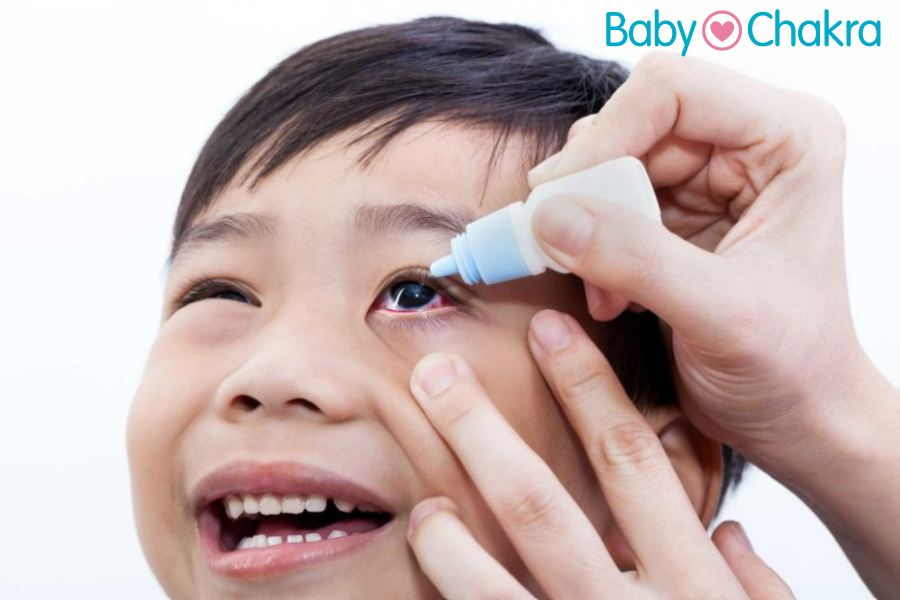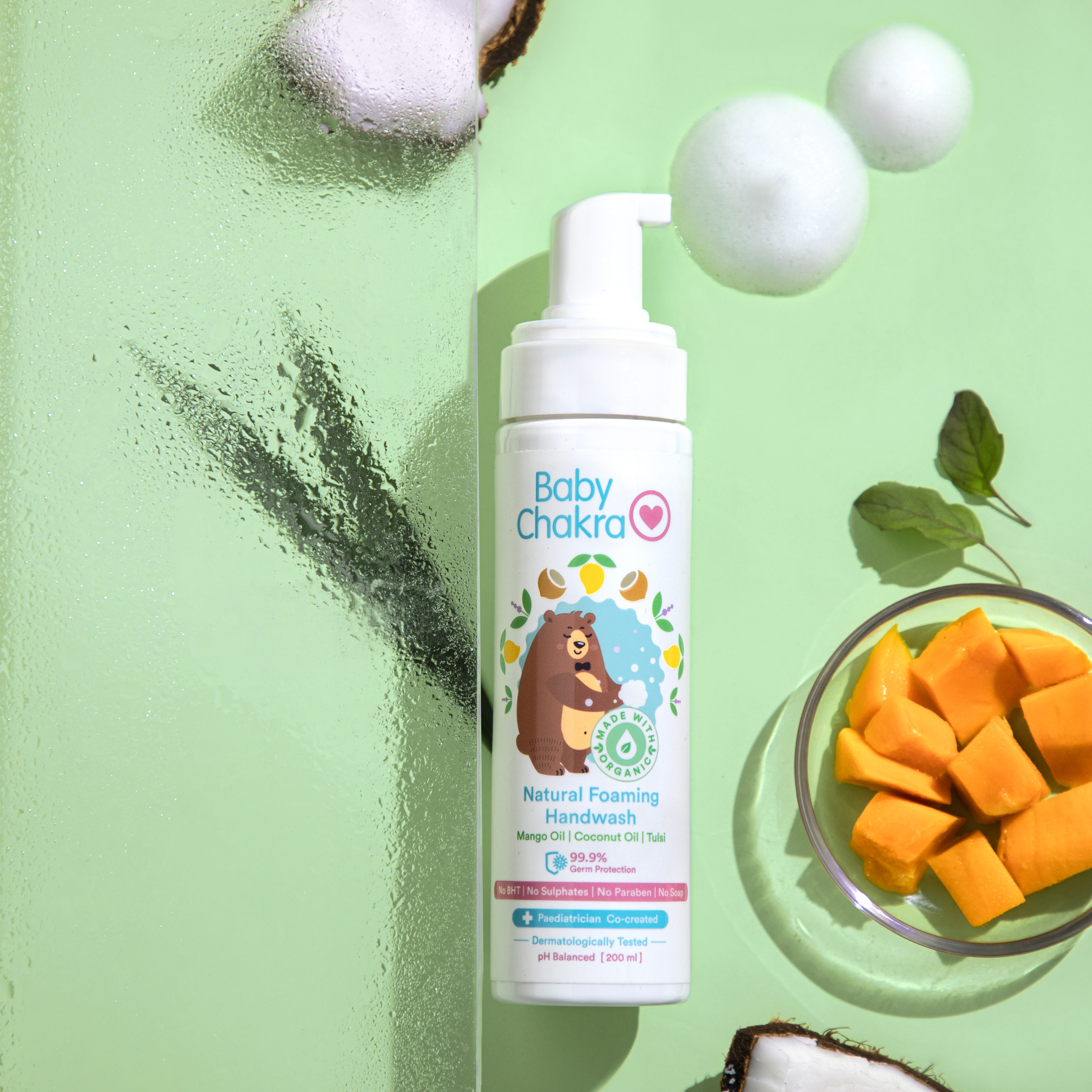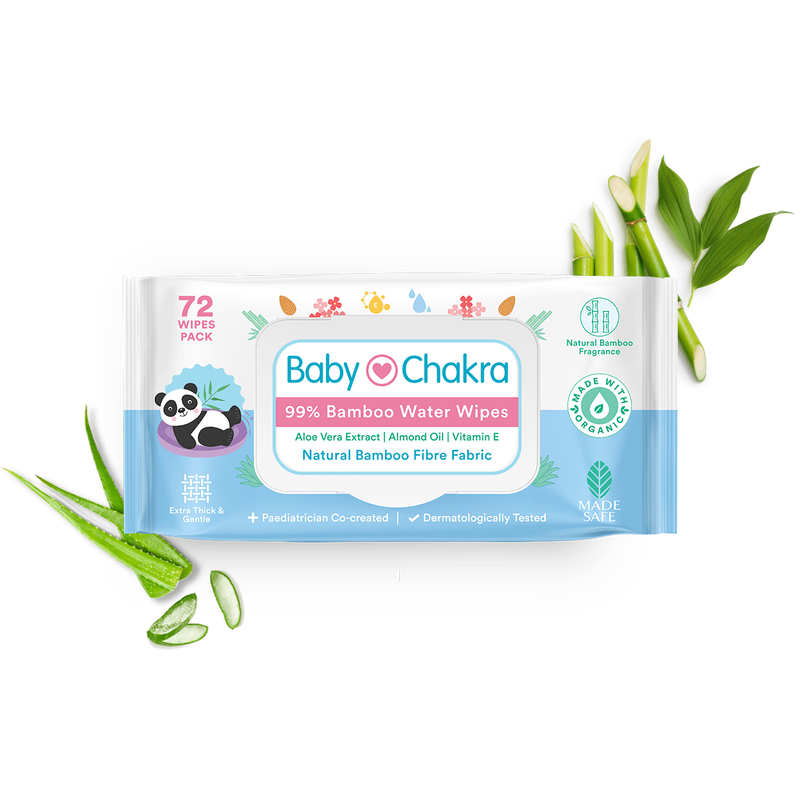
How To Treat Pink Eye (Conjunctivitis) In Toddlers
22 Nov 2022 | 5 min Read
Sudeshna Chakravarti
Author | 799 Articles
Does your little one have red and watery eyes? If yes, then chances are they are suffering from pink eye, a common eye infection that affects more than three lakh kids and adults in India. This eye infection is usually super-uncomfortable for kids and can make them fussy and irritated. Also, pink eye is highly contagious in nature, and if proper care is not ensured, it can spread to other family members.
In this post, we give you an overview of the symptoms and common causes of pink eye in toddlers and effective home remedies and treatment methods to speed up your little one’s recovery.
What is Pink Eye?
Pink eye, also known as conjunctivitis is an inflammation of the conjunctiva, which is the membrane lining your eyes and lids. The telltale symptom of pink eye in toddlers is the white part of their eyes turning red, as the blood vessels swell up due to an irritant, infection, or allergies. In some cases, this condition may only affect one eye, and in others, it may occur in both eyes as well.
Common Causes of Pink Eyes in Toddlers
The most common causes of pink eye in toddlers include
- Viruses: This is one of the most common causes of pink eye in toddlers and may also be accompanied by colds. In fact, most kids experience a stuffy nose when they have conjunctivitis, and that’s why this condition is also referred to as cold in your toddler’s eyes.
- Bacteria: Certain bacteria may cause pink eye in toddlers, and in some cases, lead to strep throat too.
- Allergens: Allergens like animal dander, mold, dust, and pollen may also contribute to this condition.
- Irritants: Chlorine or smog may enter your toddler’s eyes and cause inflammation in their blood vessels, leading to pink eye.
Is Pink Eye Contagious?
Both viral and bacterial pink eye are extremely contagious. They are transmitted by sneezing, coughing, and hand contact with the affected person. However, pink eye caused by allergies or irritants are not that contagious and their spread can be easily avoided by observing precautionary measures.
Symptoms of Pink Eye in Toddlers
The symptoms of pink eye vary depending on the type of infection and severity your toddler is experiencing. The following symptoms of pink eye in toddlers can help you determine the exact cause of the infection and administer a suitable treatment method.
Pink Eye Caused By a Viral Infection
- Infection in one or both eyes
- A burning sensation in the affected eye
- Watery eyes
- The infection may be accompanied by a cold, and other symptoms like sore throat, and fever.
Pink Eye Caused By a Bacterial Infection
- One or both eyes appear pink or red
- The infected eye may have a yellow or green discharge
- Your toddler may complain of pain in their eyes
- Other symptoms may include an ear infection
Pink Eye Caused By Allergens
- Both eyes appear teary and red
- Your toddler may complain of an itchy nose
- Other symptoms include a stuffy or runny nose
Pink Eye Caused By Irritants
- Infection in one or both eyes
- The eyelids appear puffy
- Symptoms may appear after swimming in a pool, or when the air pollution level is high
Treatment of Pink Eye in Toddlers
Your doctor will monitor your child’s symptoms to determine the exact cause of the infection and offer a treatment solution accordingly. Based on your toddler’s diagnosis, the doctor may recommend the following treatment methods.
- For a bacterial infection, the paediatrician may prescribe an antibiotic.
- If a viral infection has caused pink eye in your toddler, then the doctor will probably only recommend prevention steps to help your little one feel better.
- For allergic pink eye, the doctor may recommend an antihistamine eye drop to bring down the redness in the eyes and other symptoms.
- If your doctor suspects irritants in your child’s eyes, they may suggest special eye drops to curb the condition.
Apart from following your doctor’s advice, make sure to keep your little one’s eye clean at all times by wiping the goop and crusty secretions with gauze or cotton balls, and wet cloths, especially in the morning or after naps.
How to Prevent the Spread of Pink Eye?
Since this infection is super-contagious, you must try to prevent its spread to the rest of the family and other kids. Follow these tips to keep your family safe from this infection.
- Make sure your toddler is washing their hands frequently with a natural handwash to avoid the spread of the infection.
- Change your toddler’s towels and bed linens daily.
- Use a clean towel every time you wash your child’s eyes and face.
- Wash your child’s clothes and towels in hot water, separately from the family’s laundry.
- Spray disinfectants on the commonly used items around your house, including door handles, faucets, and toys.
Conclusion
Pink eye in toddlers is mostly caused due to viral, bacterial, and allergic infections, and can have different symptoms depending on the cause. Since these infections can spread from one person to another easily, you must ensure proper care to avoid their spread. This can be done by teaching your child to wash their hands frequently and using gentle water wipes before shaking someone’s hands.
Cover Image Credit: Freepik.com
A


Related Topics for you
Suggestions offered by doctors on BabyChakra are of advisory nature i.e., for educational and informational purposes only. Content posted on, created for, or compiled by BabyChakra is not intended or designed to replace your doctor's independent judgment about any symptom, condition, or the appropriateness or risks of a procedure or treatment for a given person.


